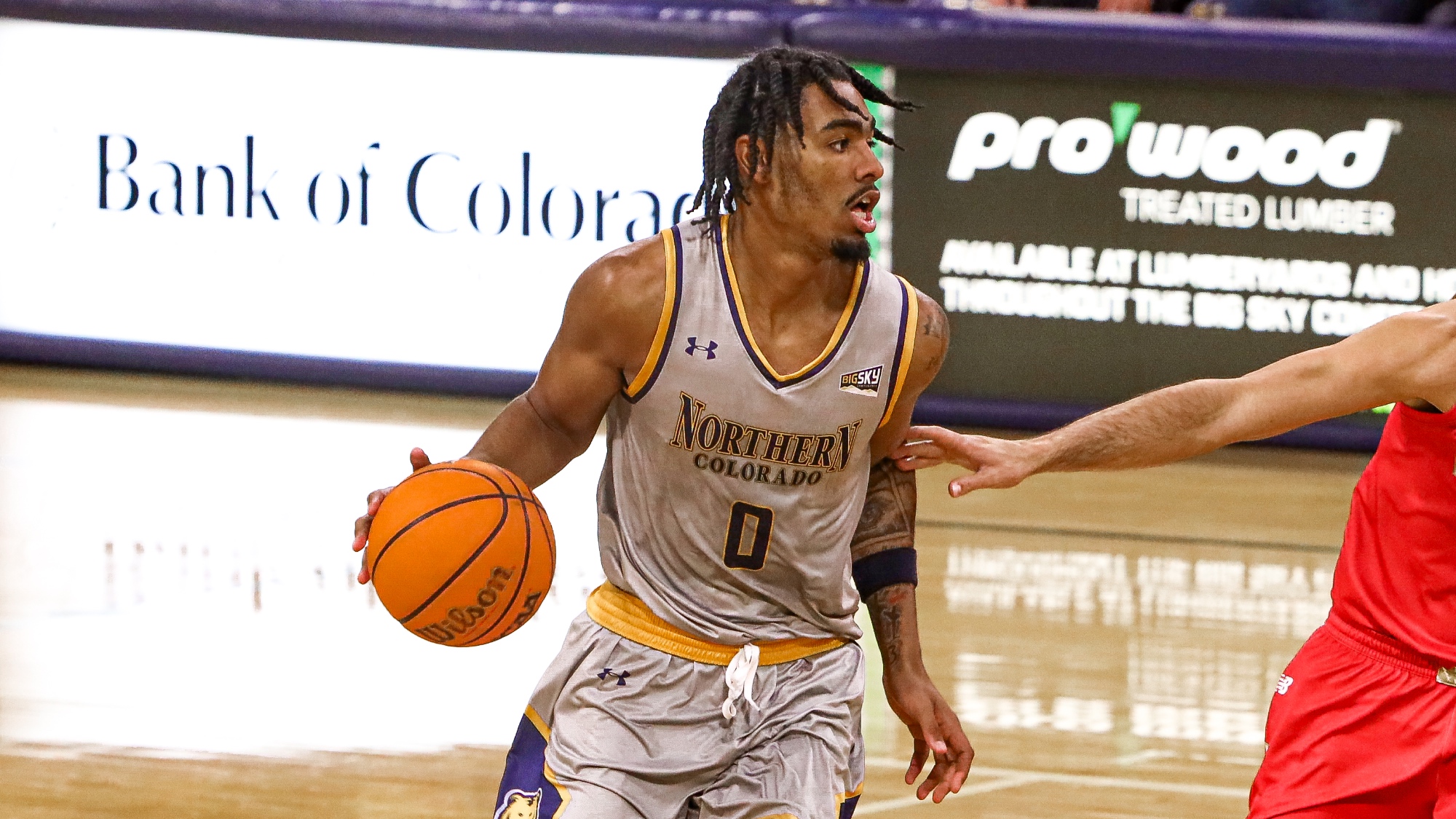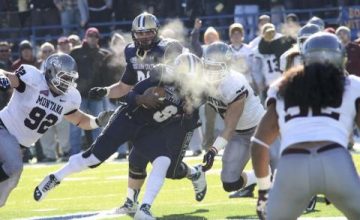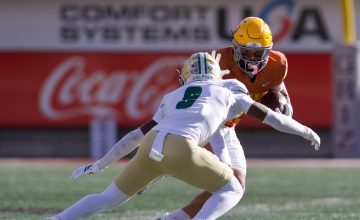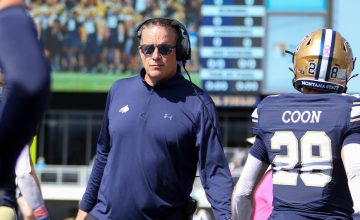The Big Sky Conference slate is to its midpoint for men’s and women’s basketball. Once again, Eastern Washington appears to be the team to beat on the men’s side. The Eagles are 9-1 in the league standings, a full three games ahead of Northern Colorado (6-3 in league) in the win column. Montana and Montana State each sit at 6-4.
Why are we doing this? Well, because we like to give you sweet content, for one, and also it’s a handy way to check back in on every team at the halfway point, and gather scattered thoughts about the league from the first half in one place. A couple notes before we begin:
– A lot of thought went into this, but it’s for fun, meant to spark discussion rather than provoke argument. It’s also just my opinion. Reasonable people can disagree. Several of the choices are agonizingly close. I’ve tried to make clear below which ones those are. Eventually, you have to put somebody on the first team and somebody on the second, or off altogether. That doesn’t mean I think those players are bad.
– I’m using the preseason ballot format for all-conference – that is, one league MVP, who also goes on the all-conference first team along with five other players. Then five on the second team, giving us 11 all-conference players altogether. I’m also not using strict positional requirements for the teams – if you could throw them on the floor together and it doesn’t look ridiculous, that’s good enough for me. I’ll also give my top three for MVP, Freshman of the Year and Newcomer of the Year. I’m not doing Defensive Player of the Year because, frankly, I don’t think I’m qualified to make that pick without watching a lot more Big Sky basketball than the already appalling amount I’m currently watching.
– It’s not difficult to pick up on my innate biases if you read the piece, but I’ll list a couple here, including my primary one: in basketball, team success matters a lot when picking all-conference, because it shows that a player can have an impact on winning, which after all is the point. Obviously there are plenty of other considerations – the rest of the roster, the coach, etc. – but generally speaking it’s difficult for me to consider a player on a bad team one of the five best players in the conference. At the same time, I’d need a good reason to say that the best team in the conference doesn’t have a player worthy of first-team consideration. I also like players who contribute in multiple areas of the game, not just scoring.
MVP
- Saint Thomas, Northern Colorado
- Cedric Coward, Eastern Washington
- Dillon Jones, Weber State
There was a point earlier in the season when, if you’d told me that Jones didn’t end up winning mid-season MVP, I’d have looked at you like you’d grown a second head. A week into the new year, he was leading the conference in scoring, rebounding and assists. Weber State had just savaged the Montana schools like a rabid wolverine, then gone on to sweep very good South Dakota State and Oral Roberts teams in the Big Sky-Summit Challenge.
As it is, only a bounce-back performance against Thomas and Northern Colorado in a clash of two top candidates on Saturday put the unanimous preseason MVP back on this list at all. Weber State won that game, 82-63, only the Wildcats’ third win in eight games since the Big Sky-Summit League Challenge.
Included in that run were (admittedly razor-close) losses to bottom-dweller Sac State and resurgent Portland State, plus a 15-point loss in Missoula in which the Griz attacked Jones constantly on the defensive end. It all culminated with a 10-point loss to Idaho State in Ogden, after which head coach Eric Duft publicly called out his team in the post-game. That led to a two-game winning streak that’s clawed Weber back to 5-5 in conference play – still not enough to put Jones back at the top of the list.

Jones has been in a tough situation all season long – playing for a shot to go to the NBA while leading a low-major team that has very little other pro talent. To make it at the highest level professionally, he’ll have to do all the little things – play great defense, make extra passes and hit 3s well enough to keep defenses honest.
In Ogden, he’s been asked to – for several years now – play an unbelievable amount of minutes and be the alpha and omega for a team that has NCAA Tournament aspirations.
This year in particular, it’s been a difficult fit. Jones is not quite talented enough to play the LeBron point forward role – to simply put the ball in his hands, surround him with shooters and let him orchestrate the offense, with his gravity and court sense creating open looks for everybody. He’s too aggressive at times and not aggressive enough at others, giving the ball up without doing anything to stress the defense and then hanging out on the perimeter asking for it back.
It’s rare to see him cut to score or to open things up for other players. Without a killer first step, Jones is often forced to settle for really difficult shots, step-backs or fade-away leaners from the block – shots he makes at a pretty fair clip, but still. He’s been disengaged too often on defense despite fantastic rebounding and steal numbers (I still think his rebounding numbers are overrated, for all the same reasons I cited last year). On one sequence in the second half against Montana, the Griz got two wide-open dunks, first by dragging him into a pick and roll action and then by back-cutting him on the baseline. His body language – towards refs, coaches, teammates – is still shaky sometimes.
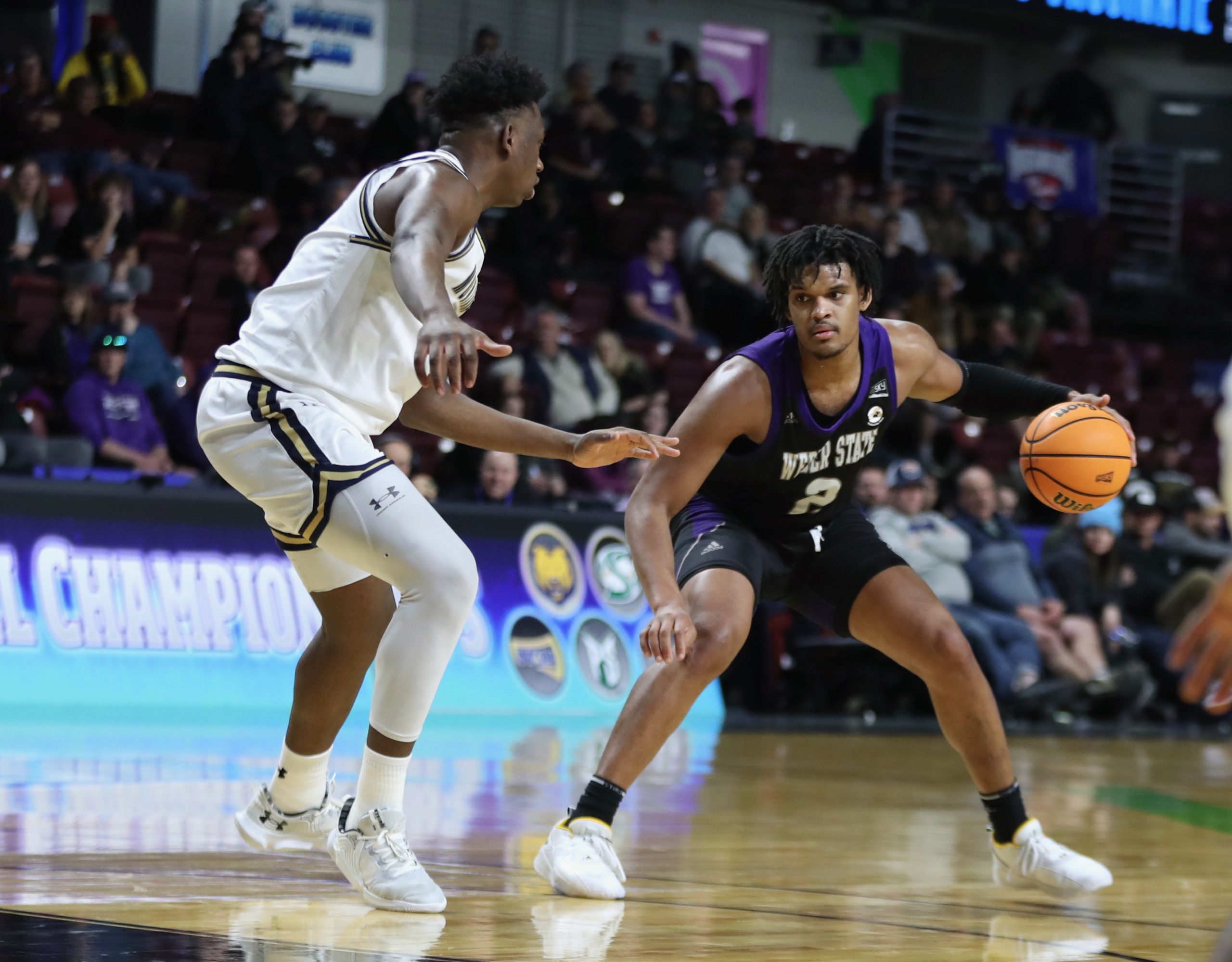
To be clear, Jones is still a fantastic player, and I’m not giving up on him as an NBA prospect. He’s absolutely capable of going on a second-half run that makes this pick look abjectly silly – and if he’s engaged for the Big Sky Tournament, the Wildcats might still be my pick to win it all in Boise.
His shooting percentages have all taken a step up from last year, as has his playmaking. He’s averaging 4.9 assists this year, up from last season, with fewer turnovers to boot. Hell, he’s averaging 19.7 points, 9.7 rebounds and those 4.9 assists per game, all second in the conference.
None of his supporting cast has stepped up consistently, and part of the blame for Weber’s often-clunky offense feels like it should go to Duft. Against Northern Arizona over the weekend, Jones willed Weber to victory with a crucial and-1 and clutch free throws late, even as his teammates tried to give the game away with misses at the stripe.
He then had 21 points, nine rebounds, five assists and three steals in an easy win against Thomas and Northern Colorado – a game that could have decided this race if Weber hadn’t hit quite so low a rock bottom earlier in January. Speaking of, the Wildcats haven’t even been that bad – three of their five conference losses have been by a single possession, including one to first-place Eastern Washington.
Jones is still a marvel to watch on the court – not long and lanky like a stereotypical wing scorer but bouncy with a running back’s squat frame, with a knack for impact blocks and steals on defense. When he commits to getting downhill on offense, there’s essentially nobody in the conference who can stop him from at least getting to the line – and that opens up in-rhythm isolation jump shots. Jones leads the conference in minutes played, and carries a heavier on-court responsibility than anyone else in the league as well. Another weekend’s worth of games – if the resurgence continues – could be enough to put him back in the top spot.
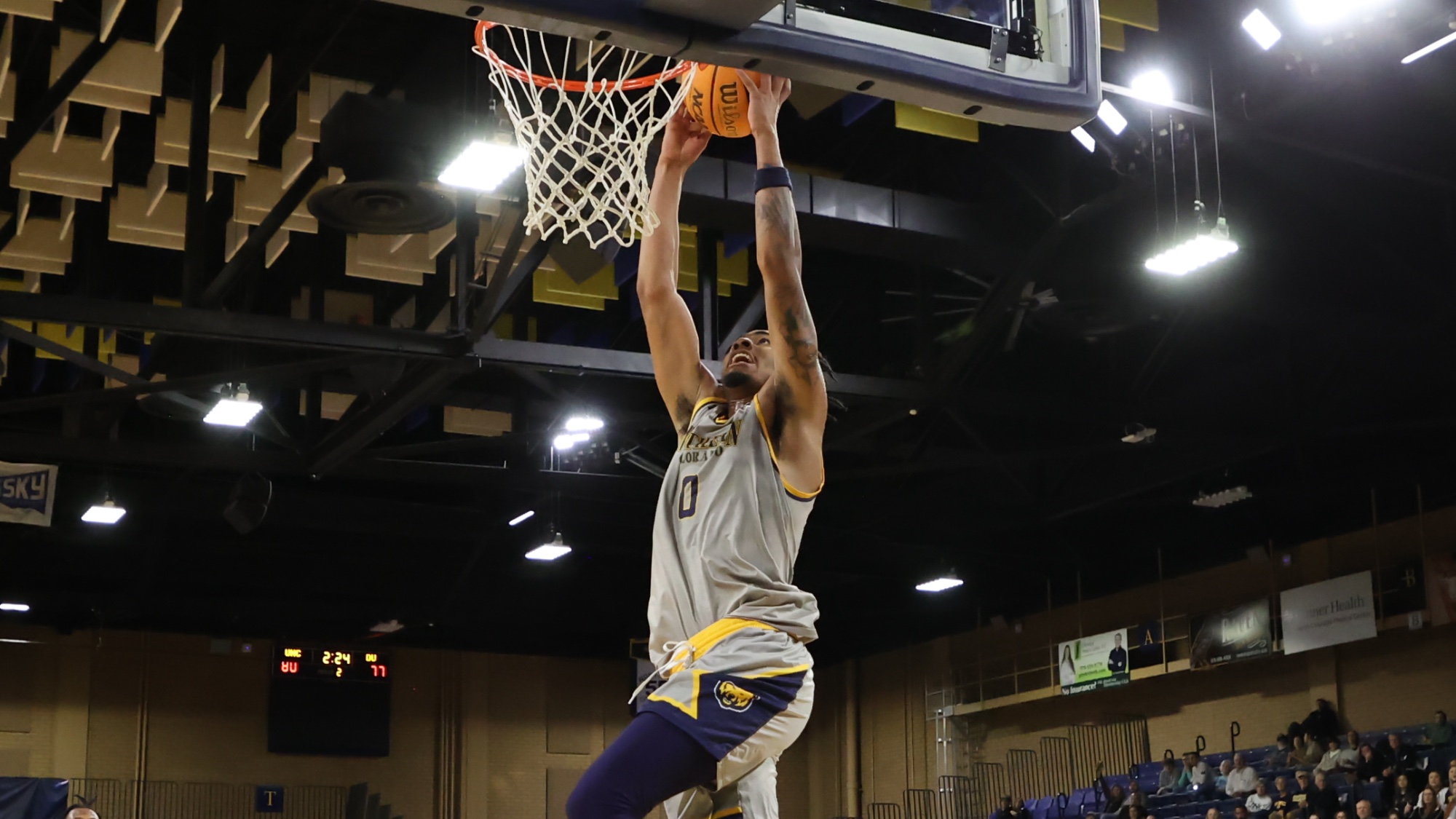
Still, as things stand right now, it’s impossible to shake the vibe that something is rotten in Ogden – which hurts Jones in a surprisingly strong race that Thomas has won more than Jones has lost.
Coming out of Loyola Chicago, Thomas has been a revelation in his first year in the Big Sky. The junior, originally from Omaha, announced himself with 31 points against CSU-Northridge in early December, then had 27 and 24 in back-to-back games against Colorado and Air Force two weeks later. After leaving the conference opener against Northern Arizona with an injury, he’s been on a tear – at least 20 points in nine of 10 games since, with 18 against Idaho State in the odd one out. He’s averaging 20.3 points and 10.0 rebounds, narrowly ahead of Jones in both categories, and providing some play-making with 3.5 assists per game, seventh in the league. He’s also won Big Sky Player of the Week honors six times.
In contrast to Jones’ grinding style, Thomas is a prototypical smooth wing scorer, capable of pulling up off the dribble anywhere on the floor or playing above the rim in transition or on cuts. Call it bias from sitting court side, but Thomas has also authored the single finest performance by a Big Sky player this season – 37 points, 13 rebounds, four assists, three blocks and no turnovers in a come-from-behind overtime win against Montana on January 11. Northern Colorado, despite the loss in the head-to-head, is a game-and-a-half ahead of Weber State at 6-3 in conference play.
Eastern Washington has been winning with depth, which makes it easy to overlook their players in an individual award race. I thought long and hard about putting Jones in second place above Cedric Coward, or even sliding Coward out of the top three altogether in favor of Montana State’s Robert Ford III. But Coward’s game and numbers – and Eastern Washington’s dominance of the conference standings – reward a closer look.
The former Willamette transfer (D-III), now in his second year with the Eagles, is not quite the all-world explosive athlete that RaeQuan Battle was for Montana State last year – but he’s not far off, either. He’s got a little bit of Battle in his offensive game, where nobody else in the league can jump high enough to block or even alter his smooth turnaround jumper from the post. At least to my eyes, he weaponizes that athleticism a little better on defense than Battle did, as well. He’s already got 20 blocks – as many as Battle had all last season – including two ferocious left-handed swats against Montana last Saturday where he let his man by, then reappeared to erase the attempt with his hops and Gumby extendo-arms.
Coward operates in an entirely different environment than Jones (and, frankly, than Thomas). Those two have to be alpha dogs for 35 minutes every night. Eastern, with six players averaging between 9.2 and Coward’s 14.3 points per game, doesn’t have an alpha dog – but the Eagles do have the best record in the league, and Coward is their most indispensable player. He’s been a part of an EWU team that has won 25 of its last 27.

He leads EWU in scoring, rebounding, blocks, steals and field-goal attempts (and is shooting 54.5%, second among EWU’s top six players). He shoots the second-most 3s on the team behind specialist Jake Kyman, and is hitting them at a 41.1% clip. Like Angelo Allegri and Steele Venters last year, his diverse skill set – outside shooting, rebounding, post scoring and rim protection all in one player – allows the Eagles to create mismatches all over the court.
Could he carry a team night-in and night-out like Thomas and Jones do? I’m not sure, although it would be interesting to watch. But that cuts both ways. With more responsibility, his numbers would be right up there with those two. On a per-minute basis, they essentially already are – Coward just plays less because Eastern is so deep and has wrapped up some easy wins.
I’m not sure that Weber State would be any better if you switched Coward and Jones. Then again, I could say the same about Eastern Washington in that scenario. Coward fits in seamlessly with the best team in the league, and he proves that every night – something Thomas and Jones can’t say. Again, it’s a close race – I think Coward, Jones and Ford (discussed in the next section) could be in almost any order behind Thomas.
ALL-CONFERENCE FIRST TEAM
Saint Thomas, Northern Colorado
Cedric Coward, Eastern Washington
Dillon Jones, Weber State
Robert Ford III, Montana State
Ethan Price, Eastern Washington
Brandon Whitney, Montana
Ford has been so good this season that I felt sick to my stomach leaving him off the MVP top three. As it is, he’ll have to settle for an easy first-team spot, plus almost certainly the league’s Defensive Player of the Year award and the imaginary Most Improved Player. The diminutive guard is one of the best stories of the season so far, and has certainly been the league’s best viewing experience, driving an almost completely new Montana State roster forward with a combination of skill and will.
A (relatively) tiny point guard with a huge afro, he hounds opposing guards on defense and creates space on offense with blurry quick handles and a slashing first step, throwing his body recklessly among the trees in the paint or saucily stepping back for 3s (he’s shooting 46% from behind the arc). He’s been responsible for several of the indelible highlights of the season, including his duel against Montana’s Brandon Whitney in Bozeman and his audacious blind pass against Eastern Washington.
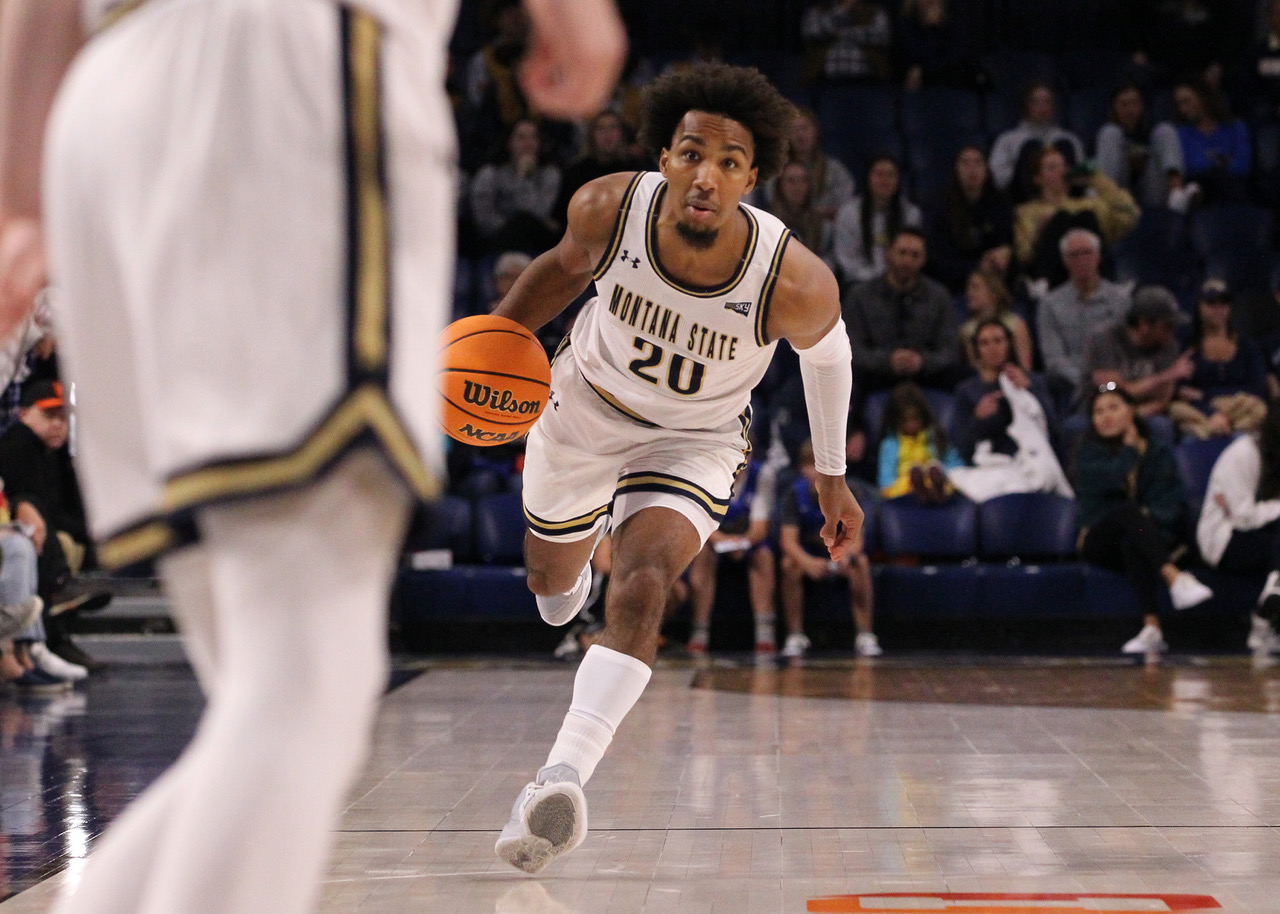
Ford is fourth in the league in scoring at 15.3 points per game, third in rebounding at 8.0 (at a listed height of 6-feet!) and 12th in assists. He’s among the best in the country in multiple categories – his 3.0 steals per game are fourth in the NCAA, while his 8.0 rebounds are first among all players 6-foot-3 or shorter (Ford is listed at 6-0). To put in perspective how many steals Ford already has, he’s one of four Bobcats with 60 steals in a season…and MSU has at least 11 games left…
Because of his lengthy resume – two years at Clackamas Community College, then two years at Idaho State, then a year backing up Darius Brown II at Montana State – Ford embodies the underdog spirit of a Bobcats team that has surprised many in Matt Logie’s first season.
Those four – Thomas, Coward, Jones and Ford – are locks for the first team.
The final two spots are a little more wide-open.
Trenton McLaughlin is third in the conference with 16.3 points per game, but he’s doing it for a 3-6 Northern Arizona team. Julius Mims is a bouncy highlight reel for an Idaho team with an even worse record. Dejour Reaves and Brock Wisne (at Northern Colorado) and Brian Goracke (at Montana State) have been capable sidekicks to MVP candidates – but for teams that have been more good than great and don’t inspire me to shove a second player onto the first team.
KJ Allen has been the best player for a Portland State team that’s bounced back after a slow start to conference play, while Brayden Parker continues to grind along at Idaho State, averaging 14 and 6 in what feels like his 10th year of college basketball.
In the end, the final two spots came down to a couple arguments among teammates.
Eastern Washington has multiple players with an argument for all-conference, but Price, like Coward, is a unique talent who enables the Eagles’ matchup-hunting – a 6-10 center who’s tied with Coward for the team lead in blocks, shoots over three 3s a game, is tied for second on the team in assists and shoots 85% from the free-throw line.
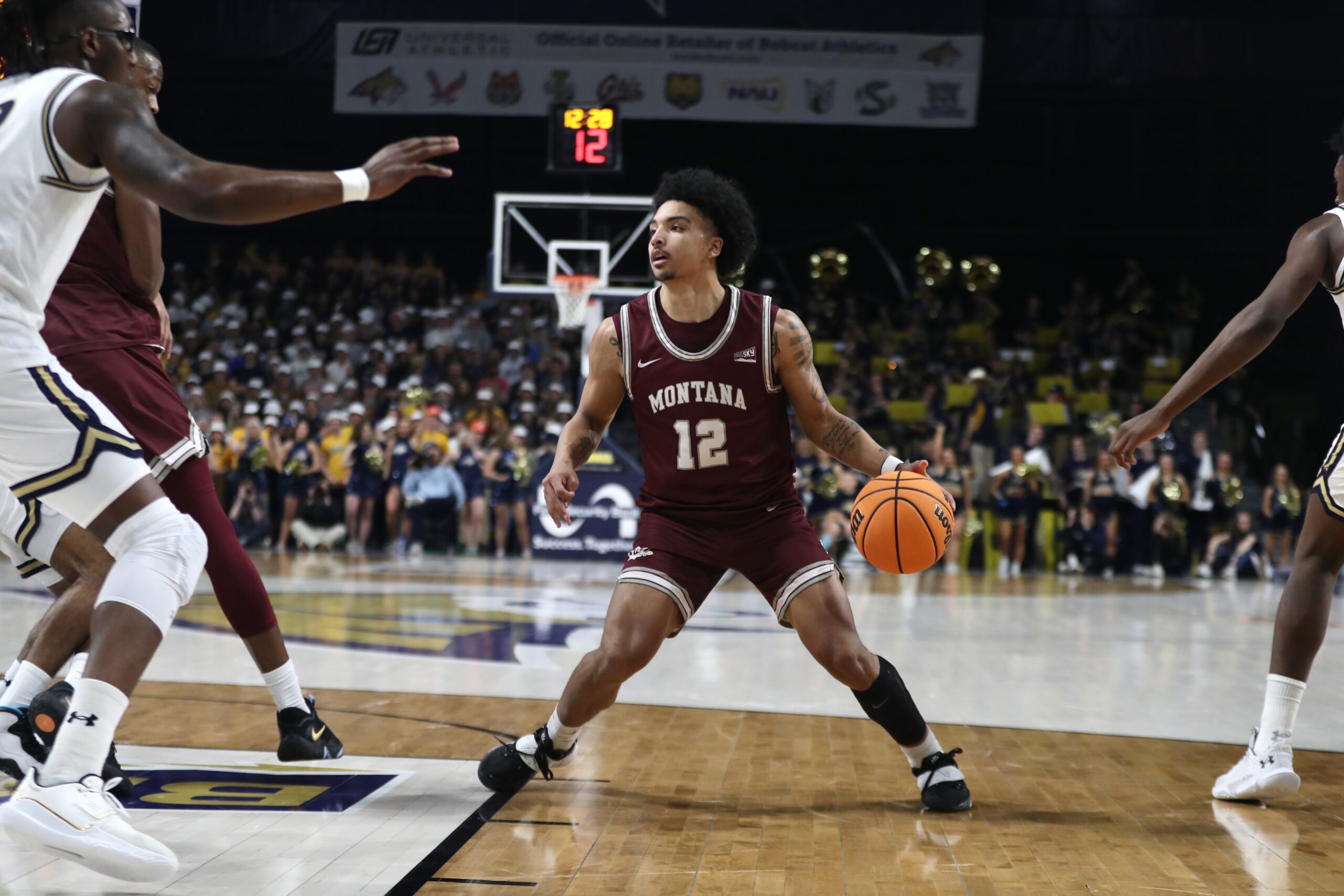
At Montana, Aanen Moody is leading the Griz in scoring but Dischon Thomas and Brandon Whitney are also in double figures, and I think they have better cases than Moody because of the other things they do. Thomas would be second behind Ford on my hypothetical Most Improved Player ballot. The former Colorado State transfer has maintained his trigger-happy 3-point shooting, but looks more athletic this year and has upped his rebounding (5.9 per game, second on the team) and rim protection (27 blocks, sixth in the conference and already more than his 18 last year). Meanwhile, Whitney is scoring at about the same range he has for four straight years, but has nearly doubled his assist average to 4.3 per game, with the best assist-to-turnover ratio in the league.
This is a rough call – ironically, I think that a fair amount of Whitney’s increased production is because Thomas can now protect the rim, which means the Griz don’t have to waste that spot on a non-shooter, which opens up spacing and driving lanes for Whitney. They’re both playing a ton of minutes recently – but Whitney has played more. He’s taken a step forward in conference play, with double figures in 10 of 12 games since coming back into the starting lineup in the conference opener against Weber State. I think – by a hair – he’s more indispensable for a Montana team that – like Northern Colorado, Montana State and Weber State – is still hovering around contention.
Second team: Brian Goracke (Montana State), Dischon Thomas (Montana), KJ Allen (Portland State), Casey Jones (Eastern Washington), Brayden Parker (Idaho State)
NEWCOMER OF THE YEAR
- Saint Thomas, Northern Colorado
- Brian Goracke, Montana State
- KJ Allen, Portland State
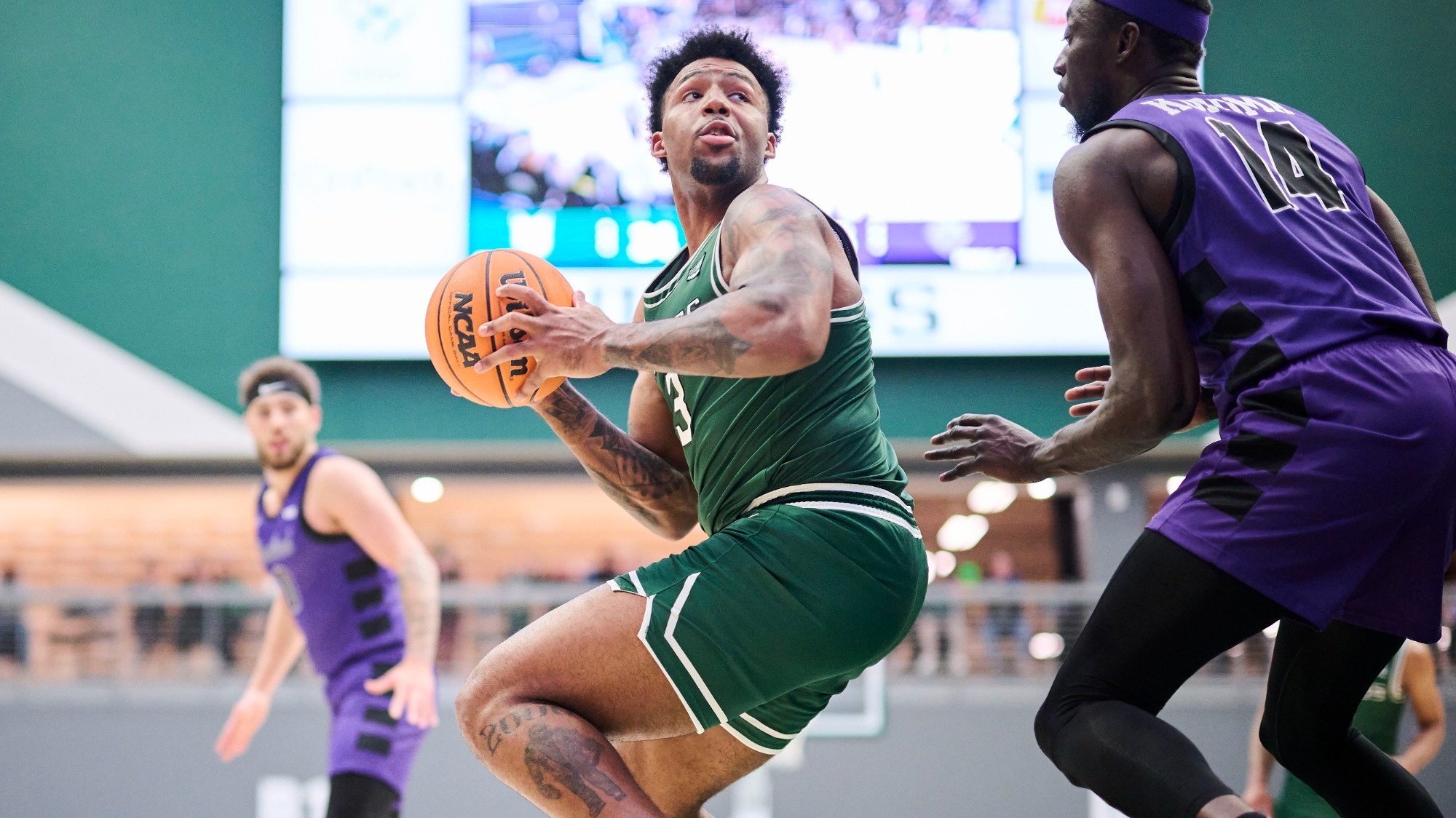
Goracke, who followed Logie from D-II power Point Loma, has dropped into the league as a ready-made D-I wing, a three-level scorer who’s making over two 3-pointers a game and has easy chemistry with Ford. Allen has turned things on in conference play, scoring in double figures in every Big Sky game except for his two games against Eastern Washington and, weirdly, Idaho State.
Others to mention: Mims, at Idaho, and Duncan Powell, at Sac State, are putting up good scoring and rebounding numbers for bad teams. Dejour Reaves has been a capable second scorer for Northern Colorado, and senior point guard Jaron Rillie, late of Samford, is leading the league in assists for the Bears. Jake Kyman has slotted right into Eastern Washington’s deep rotation, and Te’Jon Sawyer has been an impactful bench scorer for Montana.
FRESHMAN OF THE YEAR
- LeJuan Watts, Eastern Washington
- Tyler Linhardt, Idaho
- Viljami Vartiainen, Weber State
It’s unsurprising that the top two names on the list, Watts and Linhardt, had the benefit of a redshirt year. Montana’s true freshman Money Williams had this award sewn up through the non-conference schedule, but the lefty from Oakland has now been out since mid-December – too much missed time to be a factor.
Watts is a worthy backup plan. The burly guard from Fresno is averaging 9.2 points and 5.7 rebounds off the bench for Eastern Washington. Linhardt has missed the past couple games for Idaho. I’m not really sure he should be eligible for this award since he played in three games last year for Washington, but he’s listed by the Vandals as a redshirt freshman. He’s averaging 8.3 points and 3.4 rebounds.
I’ll take Vartiainen, who’s averaging just under 20 minutes a game for Weber, in the third spot ahead of a couple names at Sac State. If Montana fans wanted to argue, Money Williams could certainly take that spot as well – even with the injury, he’s still scored more total points and grabbed more rebounds than Vartiainen has this season. Problem is, Williams has yet to play in a game against a conference opponent.

